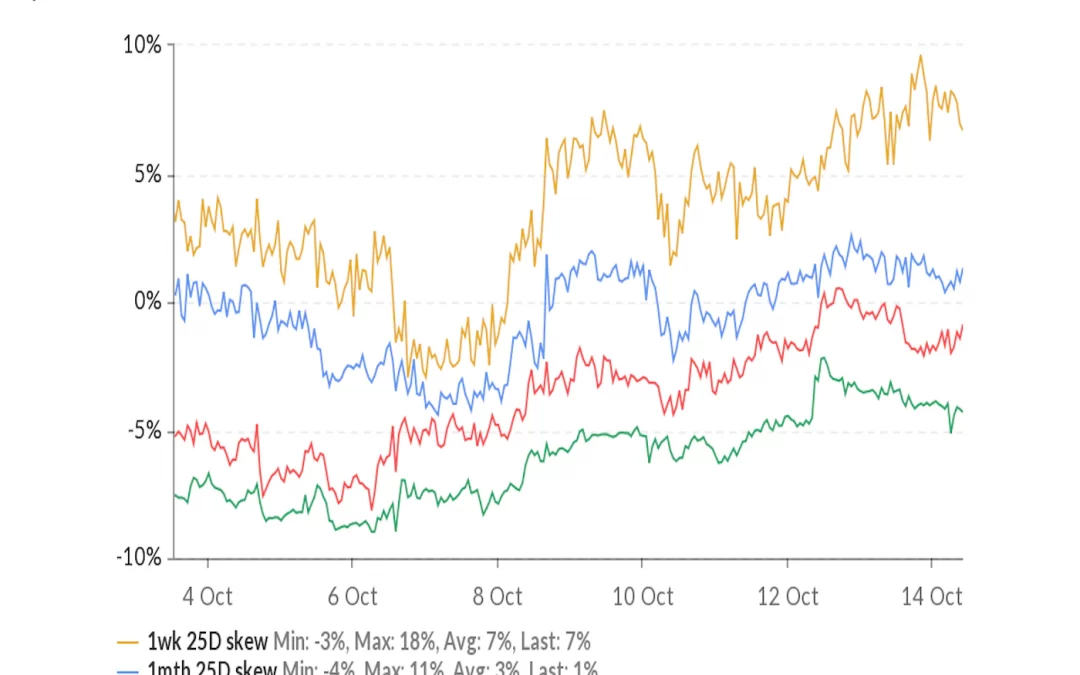Bitcoin is showing signs of exhaustion after the minutes from the Federal Reserve’s September meeting, released late Wednesday, flagged inflation concerns and revealed growing support for a faster unwinding of stimulus.
The cryptocurrency is currently trading marginally lower on the day near $57,300, having earlier touched a five-month high of $58,500. It is up 30% this month, though, buoyed by increased expectations that the U.S. Securities and Exchange Commission will soon approve a futures-based bitcoin exchange-traded fund (ETF).
The Fed minutes carried fewer references to inflation being transitory and showed policymakers are worried price pressures might remain high for longer than previously assumed.
The shift from the long-held narrative that high inflation will be short-lived suggests the central bank may opt for a faster policy tightening than is already priced in. Several policymakers said they preferred to proceed more rapidly.
Faster tightening would be negative for bitcoin and liquidity-addicted asset markets, in general. Markets have anticipated a monthly tapering of $15 billion starting from November or December. The central bank has been buying $80 billion of Treasurys and $40 billion of mortgage-backed securities every month since the onset of the coronavirus pandemic in March 2020.
Still, sentiment among some market participants remains bullish, with analysts calling for continued “HODLing” – crypto slang for buy and hold – at least till the first ETF is approved. The SEC is likely to approve at least four ETFs this month, according to Bloomberg.
However, bitcoin has already rallied more than 30% on ETF speculation. Further, a futures-based ETF has a downside and may not be as bullish as widely expected. So the Fed’s hawkish tilt may hurt bitcoin, especially if equity markets drop.
Bitcoin’s options market shows demand for downside protection in the form of put options. “Front-end risk reversals [short duration] remain skewed to the downside (ie puts are more expensive than calls) and the put skew has actually deepened with spot moving higher,” QCP Capital said in its Telegram channel. “A reflection of prevailing downside nervousness in the market.”
The one-week put-call skew has climbed to 7%, while the one-month gauge has crossed above zero. Positive figures indicate that put options, or bearish bets, are drawing relatively higher prices than calls, which are bullish.
The long-term sentiment remains bullish, with three- and six-month skews entrenched in the negative territory.














